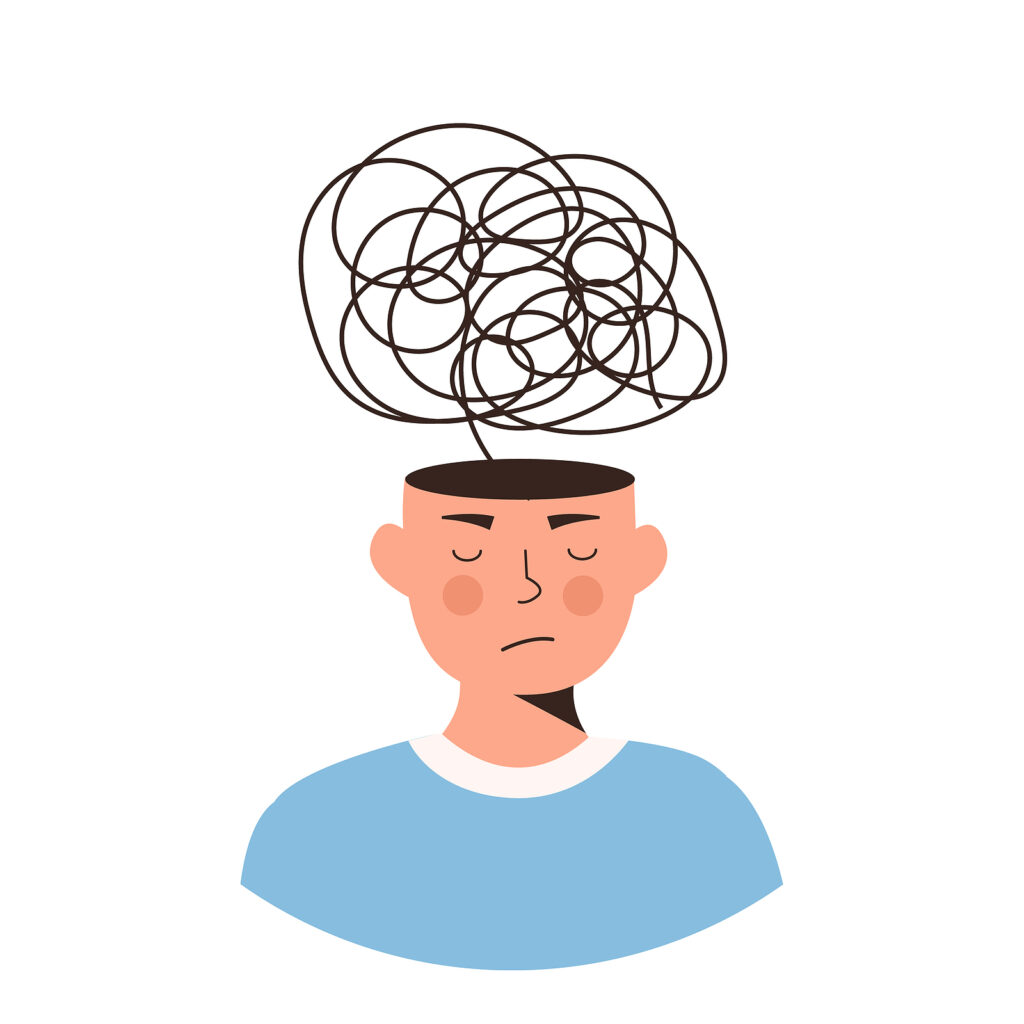Attention Deficit Hyperactivity Disorder (ADHD) is a neurodevelopmental disorder that limits one’s capacity for executive functioning. Located in the prefrontal cortex of the brain, executive functioning skills are mental processes that enable us to plan ahead, create and prioritize goals, juggle multiple tasks, filter distractions, and much more. To create an analogy, imagine your brain as an airport and your executive functioning skills as the air traffic control system. Within this system, the air traffic controllers work in concert to help planes land and take off safely across many different runways. Just as an airport would quickly become chaotic without controllers directing air traffic, the brain greatly struggles to organize and execute its tasks without robust executive functioning skills.

Although the executive function is responsible for the performance of a host of daily living tasks, it relies on a few underlying brain systems. One of these systems is called working memory. This governs our ability to retain and manipulate incoming information over short periods of time. According to recent research, ADHD appears to be associated with marked impairments in working memory. In fact, the Journal of Abnormal Psychology cites that 62% to 85% of children with ADHD were found to have working memory deficits. These deficits also tended to persist over time.
While researchers are still investigating the connection between working memory and ADHD, it’s important that people with ADHD learn what working memory is and also how to manage the pace of daily life when their working memory fails them.
What Is Working Memory?
The brain’s working memory system is what allows us to hold thoughts in our minds. This is so we can use them in real-time to complete a task. Acting as both a temporary storage and work space, working memory juggles multiple pieces of information that can then be employed to carry out an action. A simple way to engage someone’s working memory is by asking them to remember five words and then having them repeat the words back in alphabetical order. With this exercise, the brain is tasked not only with remembering incoming information but also with manipulating that information to create something new. Unlike long-term memories, which remain dormant even when we are not thinking of them, working memories are active and transient. Representing a kind of mental scratchpad, the working memory system holds important information online so that the brain can use that information effectively.
When Do We Use Working Memory?
Working memory is essential for daily functioning. It is what allows us to follow immediate instructions, track conversations, complete multi-step tasks, and much more. For instance, imagine you’ve been tasked with cooking mashed potatoes for Thanksgiving dinner. When you walk into the kitchen, a family member asks you to take out the butter and the cream from the fridge, the potatoes from the cabinet, and the salt and pepper from the spice rack. Then you are asked to wash the potatoes and put a pot of water on the stove to boil.
Although you’ve just been bombarded with several instructions, your working memory kicks into gear. It allows you to hold the new information in mind as you consecutively complete each step. As you open the fridge and take out the cold ingredients, you are able to remember your next instruction. It is to get the potatoes from the cabinet. All instructions remain online in the brain until you have successfully finished your To-Do list.
However, ADHD brains struggle with this kind of undertaking. Despite their best intentions, people with ADHD often have trouble staying on track long enough to complete a complex task. In the case of Thanksgiving dinner, for instance, someone with ADHD might take just the butter out of the fridge and put the potatoes in the sink to be washed. Then they might get distracted by their phone, which is ringing in the other room. When they walk back into the kitchen an hour later, they are shocked to find the potatoes still sitting in the sink.
Additionally, working memory is essential for successful conversations between two people.
When talking to a friend, for example, your working memory system is actively engaged in order to process the verbal and non-verbal information your friend is communicating to you. Although you may not be consciously aware of it, working memory is what allows you to simultaneously hold the communicated information in mind and formulate an appropriate response.
Working memory deficits in ADHD make it difficult to perform such mental multitasking. People with ADHD have to work extra hard to listen to and recall what is being said. This leaves little mental space for coming up with a relevant reply. It makes sense then why many individuals with ADHD can be perceived as awkward, inattentive, or off-topic in social situations. Their poor working memory acts as a major roadblock to tracking and responding to the social environment.
ADHD and Working Memory
Until relatively recently, issues with organization and task completion in people with ADHD have been attributed solely to deficits in attention. As the name suggests, a primary symptom of ADHD according to the DSM-5 is an inability to focus and sustain attention on one given thing. However, current research reveals that patterns of inattention in ADHD are actually indicative of a deeper problem with working memory. As Clinical Neuropsychologist Dr. Matthew Cruger explains, “Working memory is a sort of category above attention.” It is a fundamental executive function that allows us to hold and process all the information we need to access at any moment.

So what happens when working memory fails? If working memory is a mental scratchpad, then poor working memory is a scratchpad that is perpetually full. Indeed, people with ADHD have significantly less room in their cognitive workspace than neurotypical people. This often creates an overload of information in the working memory system. Once the system is overloaded, new information is not adequately processed and therefore cannot be used to carry out an action or task.
According to ADHD expert Dr. Russell Barkley, we can further understand working memory deficits in ADHD by simplifying the brain into a two-part system: the back half and the front half.
The back half can be viewed as the knowledge side. Representing a kind of filing cabinet, the back brain is responsible for acquiring new information. It’s also responsible for storing it for long-term use. On the other hand, the front half of the brain is the performance side. Home to our executive functioning skills, it draws information from the back of the brain and keeps that information online so that it can be manipulated, organized, and used in daily life.
People with ADHD have the same breadth of knowledge as neurotypical people. But, the trouble comes when they have to pull up this back brain knowledge and apply it in real-time. Because their working memory is weaker and prone to overload, individuals with ADHD have major challenges taking things they know and using them to execute a task. This is what Dr. Barkley meant when he famously described ADHD as not a disorder of knowing what to do, but a disorder of doing what you know. Indeed many experts today argue that at its core, ADHD is not actually an attention disorder. Rather, it is a performance disorder exacerbated by poor working memory.
How Can I Improve My Working Memory?
Despite the limits of working memory in people with ADHD, there are techniques and strategies that can help compensate for and potentially strengthen working memory.
Offload and externalize information
When your working memory becomes overloaded, important information can get easily tossed aside and forgotten. To lighten the cognitive burden, get into the habit of immediately offloading important information onto an external source. For example, you may receive key instructions or feedback in your weekly one-on-one meetings at work. If so, start bringing a small notepad to write down points you don’t want to forget. Other effective external cues include To-Do lists, wall calendars, planners, sticky notes, or even the “Notes” app on your phone. By offloading the demand on your working memory and putting it in front of you in your environment, you don’t have to rely as much on internal mechanisms that can be faulty.
Break down complex information into smaller chunks
For people with ADHD, holding multiple things in mind at once is a great challenge. This can make tackling complex, multi-step tasks feel overwhelming or impossible. A helpful way to simplify a large looming task is to break it down into smaller chunks. Also called scaffolding, this technique allows you to visualize something big and multifaceted as a simple sum of its parts.
For instance, imagine you are hosting a birthday party for your friend. You might start thinking about all the things you need to do to prepare and then try to start them all at the same time. For example, sending out invites, shopping, cleaning, and setting up. However, taking this approach is not only stressful but also taxing on your working memory. Things are likely to get forgotten. Instead, focus on one area of planning and finish it completely before moving on to the next area. Once you finish sending out all of your invitations, then you can head to the store to start the shopping. Chunking the task into bite-sized pieces puts significantly less pressure on your working memory to juggle multiple pieces of information.
Try brain training exercises
In the same way that we can target specific muscle groups during a workout, research shows that we can also improve our brain functioning with mental exercise. Through something called neuroplasticity, our brain is capable of changing and forming new connections that can improve cognitive skills such as memory. Below are some games and tools that have been shown to specifically target working memory:
- COGMED Working Memory Training – a research-based computer program that enhances verbal, visual, and special memory through a series of 12 challenging exercises.
- Elevate – an app that provides over 30 games designed to boost memory skills, focus, and processing speed.
- Sudoku – a logic-based number game that challenges players to try different combinations of numbers and keep those combinations in mind as they solve the puzzle.
- Scrabble – a classic word game that requires players to hold words on the board in mind as they anticipate how to build new words with the letters in front of them.
Practice self-care

In addition to the strategies above, it’s imperative that you prioritize self-care each day. That means getting enough sleep, eating nutritious meals, and finding the time to exercise regularly. Taking care of your body has been proven to help reduce stress, improve mood, boost focus and attention, increase memory capabilities, and so much more. It is foundational to fostering neuroplasticity in the brain and can improve not only working memory but all aspects of life, as well.
In Conclusion
ADHD affects one’s capacity for executive functioning. More specifically, it weakens the working system, which makes it very difficult to mentally juggle multiple pieces of information at once. The unfortunate result is that people with ADHD are often perceived as inattentive, forgetful, and behind. However, by educating oneself and others about the reality of working memory deficits, people with ADHD can begin to combat the stigma surrounding ADHD symptoms and also learn ways to overcome them.
Begin Working With an ADHD Therapist in New York, NY
Working to improve your working memory can be much easier said than done. This is why our team is happy to offer support for clients across New York. We are here to help you realize your ADHD superpowers, and you can start your therapy journey with The ATTN Center by following these simple steps:
- Reach out to us through our convenient online therapy contact page!
- Learn more about our team and the services offered here!
- Begin the journey to understanding your diagnosis and living your best life!
Other ADHD Services Offered by The ATTN Center in NYC
We understand that different aspects of your life may be affected by ADHD. Our team is happy to offer a variety of services to support you in coping with ADHD symptoms. This includes therapy for ADHD-related anxiety and depression, group therapy, ADHD-focused therapy, testing, and neurofeedback options. At ATTN Center of NYC, we do everything in our power to treat ADHD without the use of medication, but we understand in some severe cases additional measures may be needed. As a result, we also maintain close relationships with many of NYC’s best psychiatrists as well. Feel free to learn more by visiting our blog or FAQ page today.